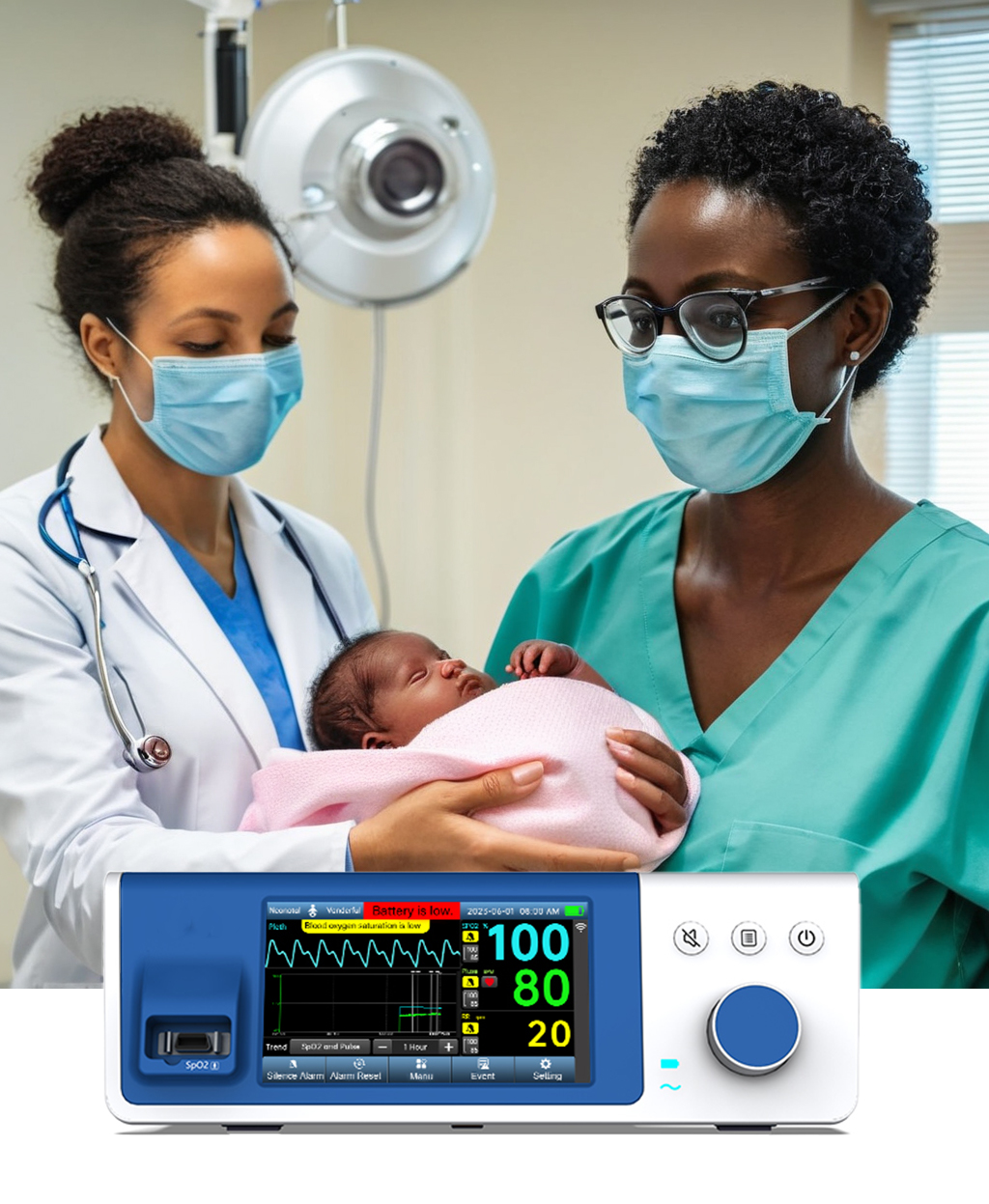The importance of blood oxygen monitoring for neonatal monitoring cannot be ignored. Blood oxygen monitoring is mainly used to evaluate the capacity of oxyhemoglobin combined with oxygen in the blood of newborns as a percentage of the total hemoglobin capacity that can be combined with blood, that is, blood oxygen saturation. This has important implications for understanding the respiratory and cardiovascular health of newborns.
First of all, blood oxygen monitoring can help promptly detect whether newborns have insufficient oxygen supply. If the blood oxygen saturation is lower than the normal range (usually 91%-97%), it may indicate that the newborn is hypoxic, which may have a negative impact on the function of the heart, brain, and other vital organs. Therefore, through blood oxygen monitoring, doctors can detect and take appropriate treatment measures in time to avoid further deterioration of the condition.
However, the physiological characteristics of newborns make blood oxygen monitoring relatively difficult. Their blood vessels are smaller and the blood flow rate is slower, which may cause the acquisition of blood oxygen signals to be unstable and prone to errors. In addition, the respiratory and cardiovascular systems of newborns have not yet fully matured, which means that when they face some pathological conditions, the changes in blood oxygen saturation may not be obvious enough, making monitoring more difficult.
Narigmed's blood oxygen technology has excellent measurement results under weak perfusion between 0.3% and 0.025%, with extremely high accuracy, and is especially suitable for measurement of newborns.
Post time: Mar-06-2024








